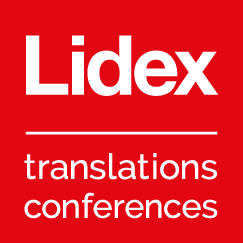
Lidex – quick and reliable
Your translation and interpreting services provider
Machine translation post editing
We have all been witnessing rapid technological development on an unprecedented scale. Artificial intelligence is now a part of our lives, often unnoticed. It can significantly speed up our work and enhance our efficiency. AI has been used in translations to varying degrees for some time now. When using automated solutions, it’s important to be aware of their limitations and implement processes that ensure our materials are both safe and accurately translated. Paradoxically, the human element is becoming increasingly important, particularly in the context of machine translation, where the role of the post-editor is essential.
Who is a post-editor?
A post-editor is a translator who specialises in a specific type of translation reviewing called post-editing. As a translator, they possess excellent knowledge of both the original (source) language and the target language into which the translation was made. They are also specialists in the subject matter of the translated texts, allowing them to thoroughly review the translated material. A post-editor has the ability to work with the text produced by machine translation and must have a keen sense of context to accurately convey the author’s intentions. Thanks to their experience and training, they can ensure text quality comparable to that of a fully human translation.
What is post-editing?
Post-editing is a comprehensive reviewing process that involves checking the text in every respect. The post-editor’s primary task is to make a detailed comparison of the original document with the translation and detect any errors in the translation. A key role of the post-editor is to introduce consistent terminology, as machine translation currently does not guarantee such consistency.
The post-editor is responsible for the final quality of the text, checking it for content accuracy, style, grammar, and spelling. They must also verify the completeness of the text.
It is crucial to adapt the translation language to ensure it aligns with the text’s purpose and is fully understandable to the recipient. The post-editor must also ensure the translation is consistent with the cultural context.
The work and responsibilities of a post-editor are detailed in the ISO 18587 standard, to which Lidex is certified.
What is the difference between post-editing and reviewing?
While comparing traditional reviewing with machine translation post-editing, it is very clear that the latter is much more difficult. When a translation is done by a human translator, it is typically terminologically consistent and culturally accurate.
In the case of machine translation, reviewing, in this case called post-editing, must be much more thorough. Machine translation, regardless of the tool used, usually requires significant corrections.
What are the types of post-editing?
According to the ISO 18587 standard, there are two types of post-editing. The first one is the so-called light post-editing, which is typically applied to texts intended for internal use, where the primary goal is to understand the meaning of the original text. The post-editor’s role here is to correct obvious errors and make necessary adjustments to ensure the text is comprehensible. Minor errors may remain if they do not hinder overall understanding.
The second type of post-editing is full post-editing. In this case, the task of the post-editor is to refine the machine-generated translation in terms of content and language, so that its quality is comparable to the quality of the human-produced translation.
What are the advantages of machine translation with post-editing?
Machine translation with post-editing offers several benefits. First of all, this type of translation enables the completion of extensive translations in a relatively short time.
In addition, it significantly reduces translation costs, which is particularly advantageous for large projects with limited budgets.
However, it is important to recognise that not every text is suitable for machine translation and post-editing. Therefore, finding a business partner who can not only provide translation services but also advise on the best process for specific materials is crucial.
The number of post-editors the translation service provider works with, their training and experience in post-editing are also crucial.
Is every text suitable for machine translation with post-editing?
Regardless of the fact that AI tools, including machine translation engines, are becoming more and more advanced, not all materials are suitable for machine translation with post-editing. These types of texts certainly include literary, marketing, and advertising texts. These often involve puns and cultural context that machines cannot adequately capture. The same applies to culturally complex texts in which reference to tradition, knowledge of idioms and norms, and the cultural context are important, as well as texts that are intended to evoke specific emotions in a given context.
Machine translation engines also struggle with some specialised texts, such as medical, legal, and technical documents. In these cases, there is a high risk that the content will not be translated correctly, and the time required for post-editing will be too long. Translation by a specialist in the relevant field is usually a better solution than relying on machine translation.
Therefore, it is particularly important to conduct a preliminary analysis of the materials intended for translation and seek professional advice on selecting the appropriate service implementation process.
What are the most common mistakes made by text translation algorithms?
While machine translation is continuously improving, it still generates various types of errors due to the nature of the documents and the principles of operation of algorithms used in machine translation.
The main problem is that machine translations often fail to maintain consistent terminology within a single document. Regardless of the tool used, the same term can be translated in different ways within the same text.
The second important category of errors are those resulting from the inability of AI to interpret the cultural context, which may lead to incorrect translation of entire phrases. There are also frequent errors in the translation of idioms/idiomatic expressions or so-called false friends, i.e. words that sound similar in the source and target languages, but their meaning is different.
The style of the translated document may also not align with its intended purpose, creating additional issues.
All these errors, along with others that may appear in machine translations, can be eliminated through the work of professional translators who specialise in post-editing, which involves thorough reviewing of the text translated by machine translation engines.
Quality of machine translation post-editing
When it comes to machine translation orders with post-editing, our work consistently results in a professionally prepared document. The text, after post-editing, must meet high quality standards, ensuring accuracy in content, language, and style. It should also be appropriate to the specific cultural context and aligned with the intended purpose of the message.
Why outsource post-editing to Lidex?
In all our activities, including post-editing, we adhere to a process-oriented approach. That is why, in 2019, we obtained certification for compliance with the ISO 18587 standard (post-editing of machine translation) and operate in accordance with its guidelines.
We also collaborate with a large team of experienced and trained translators, who are specialists in their fields and excel in the challenge of post-editing machine translations.
As a result, the machine translations with post-editing that we perform on behalf of our Customers meet their high requirements regarding the quality and timeliness of the services provided. We are always open to feedback on the quality of our work and regularly assess the satisfaction levels of our Customers.
Feel free to contact us:
Warsaw machine translation post-editing
Gdynia machine translation post-editing
Katowice machine translation post-editing
or use the contact form below

Translation and interpreting services Warsaw
tlumaczenia@lidex.pl
(22) 512-47-30
Monday – Friday 8:00 a.m. – 6:00 p.m.
- The fields marked with an asterisk (*) are mandatory.

